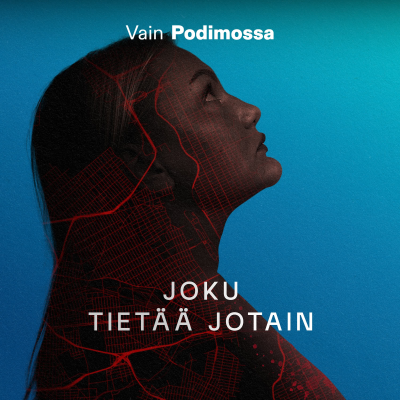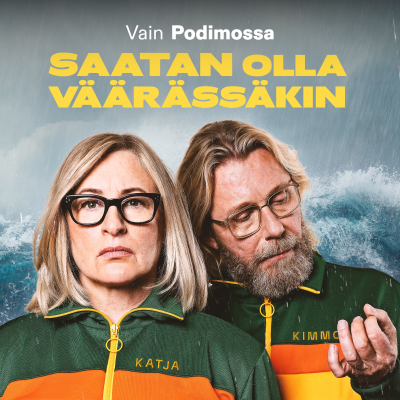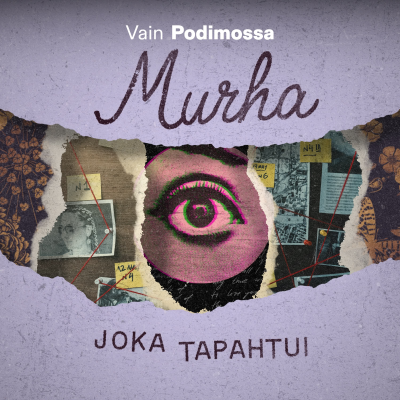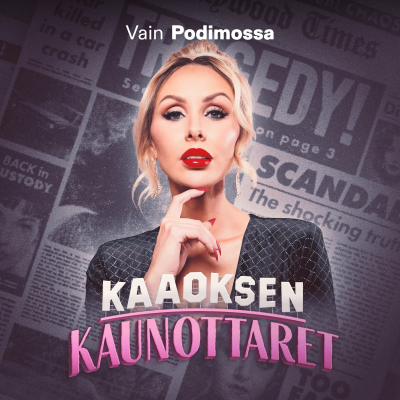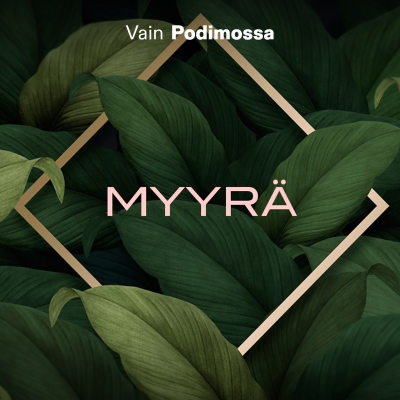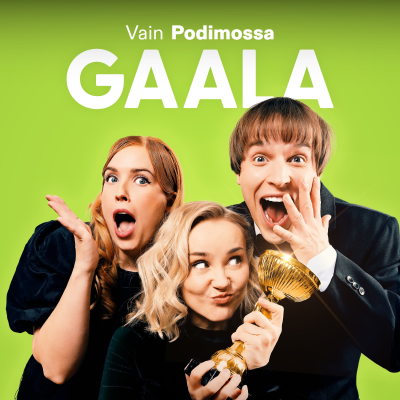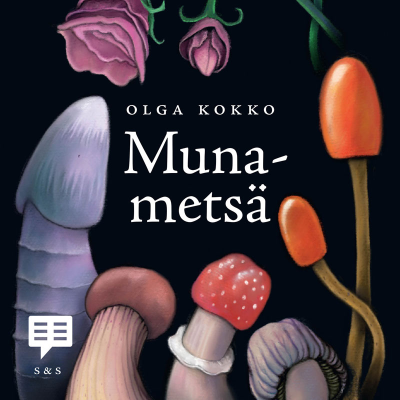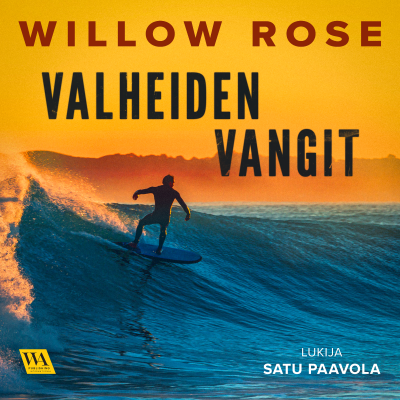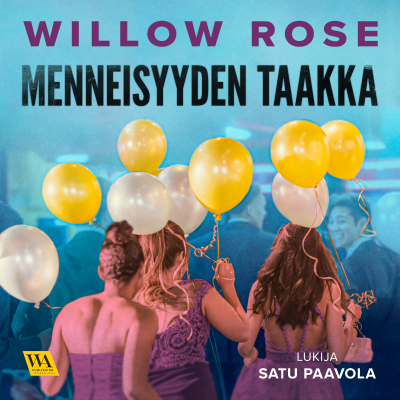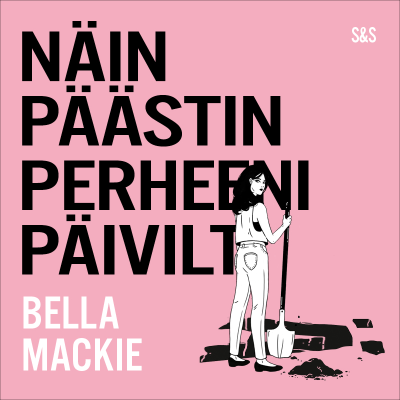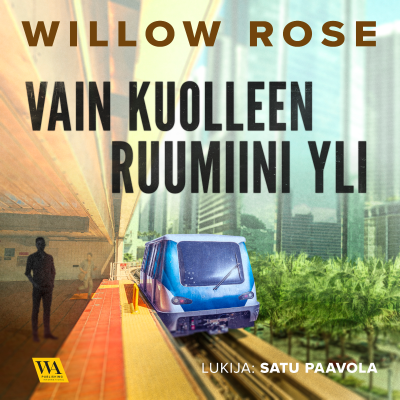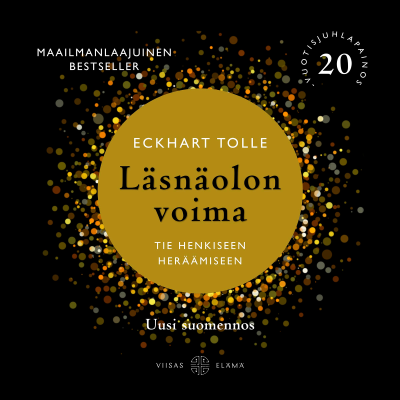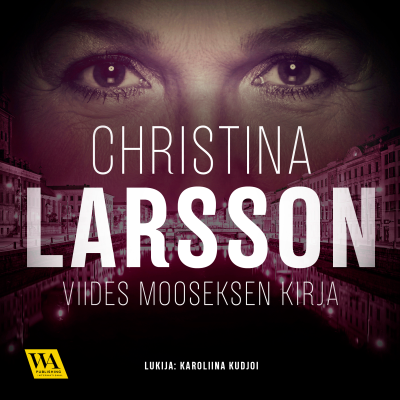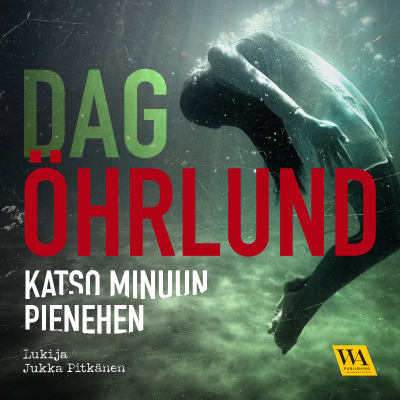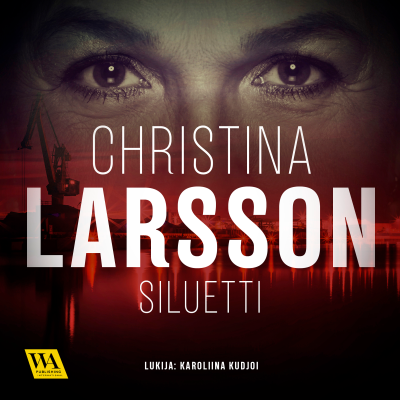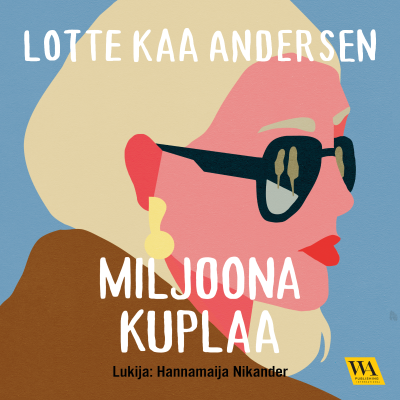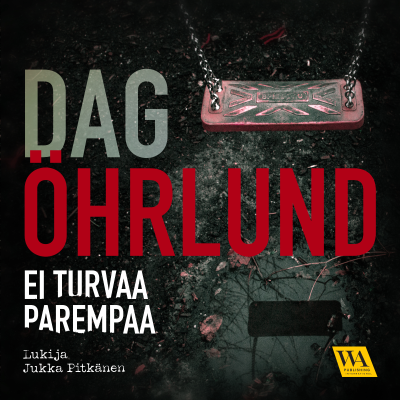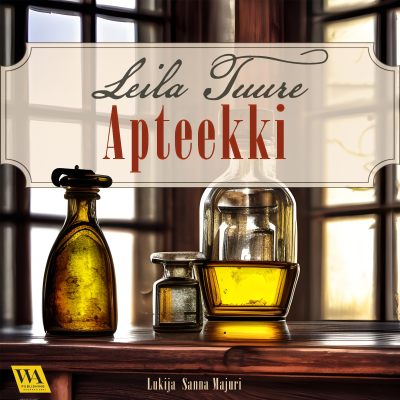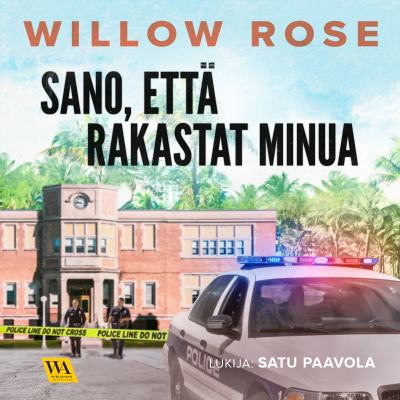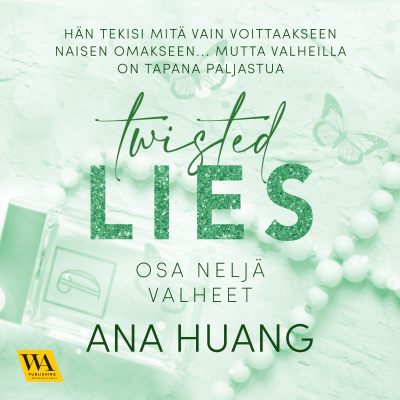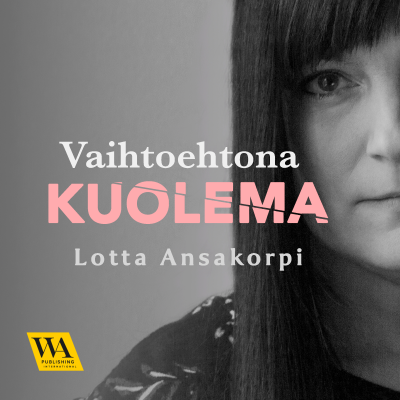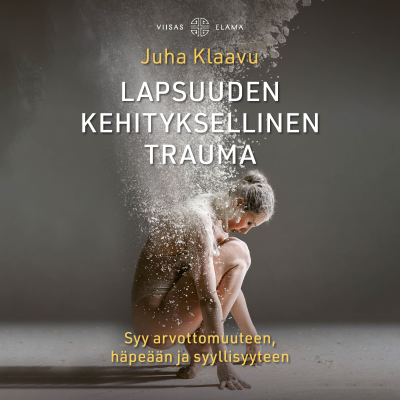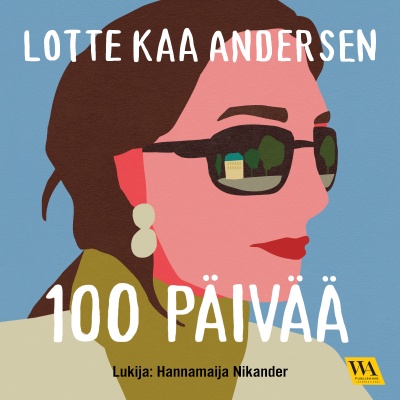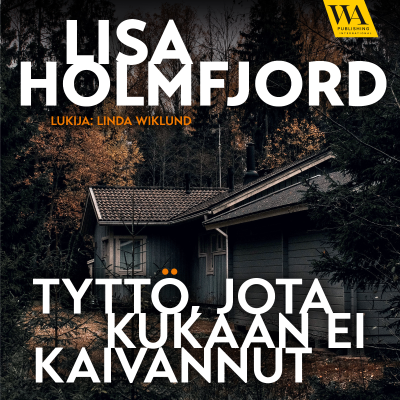
Shades of Green
englanti
Henkilökohtaiset tarinat
Rajoitettu tarjous
1 kuukausi hintaan 1 €
Sitten 7,99 € / kuukausiPeru milloin tahansa.
- Podimon podcastit
- Lataa offline-käyttöön
Lisää Shades of Green
Welcome to Shades of Green, a podcast exploring environmental justice from unceded Mi’kmaq territory. This series features a variety of amazing voices -- including Lincolnville resident James Desmond, MSVU Nancy’s Chair El Jones, frontline Mi’kmaq activists Barbara Low, Madonna Bernard, Paula Isaac and Michelle Paul, Order of Canada recipient Catherine Martin, Africville descendent and teacher Jaden Dixon, Senator Wanda Thomas Bernard, Sipekne’katik District War Chief Jim Maloney, archeologist and ethnographer Roger Lewis, and environmental justice researchers Dr. Cheryl Teelucksingh, Dr. Carolyn Finney, Dr. Julian Agyeman, and Dr. Ingrid Waldron, amongst others. Shades of Green was made possible by countless people engaged in thinking about and fighting for environmental justice in Mi'kma'ki, across Turtle Island and Beyond. It has been supported by Ecology Action Centre and the Community Conservation Research Network. Our theme was composed by Nick Durado. https://budi.bandcamp.com/ Subscribe on iTunes, Stitcher, or wherever you enjoy fine podcasts, and follow us on Twitter: @NSShadesofGreen
Kaikki jaksot
21 jaksotJustice in Public: Reconciliation, Reparations and the Decolonized Future
What will Mi'kma'ki look and feel like when environmental justice is achieved? Over the last couple of years, we've asked this question to dozens of people working on the front lines of these movements. Because it turns out that environmental justice is not just about dismantling systems of oppression like colonial and white supremacy. It definitely IS about those things, but it's also about imagining and shaping futures where we can all safely live, work and play together on these unceded lands, humans and non-humans alike. For some it was a daunting questions. After all, environmental justice can only happen when we've healed from all of the other kinds of injustice too. As Indigenous Climate Justice activist and member of Chipewan First Nation Eriel Deranger describes, "It’s not just about the environmental movement. Decolonization only works if it’s across the board. Through economics, through commerce, through trade, through the development of those resources. For me, decolonization is a restoration of balance in our relationship with mother earth, and it would change everything." Others really relished in sharing their visions of a just future. Mi'kmaq rights holder and activist Barbara Low's vision was on the tip of her tongue. “This has always been Mi’kma’ki and it will be fully Mi’kma’ki again and that means all of our unceded territories. This whole colonial project is just going to be a drop in the bucket of our whole time." In today's episode we'll be exploring how tools and frameworks from reparations and reconciliation to decolonization and afrofuturism can help us to envision and shape futures where we don't have to fight for environmental justice any longer. African American writer and cultural geographer Carolyn Finney compels us to imagine how we will attend to the relationships at the centre of these visions, too: "What if everything from legislation to the way we structure our institutions, our curriculums, and our behaviour, came from that premise that justice is love made public? That’s a state of mind I want to be living in, where we don’t necessarily have to call things out like environmental justice or social justice anymore, because we are always tending to it in a full, rich, and complex way, as part the fabric of who we are." We all have roles to play in imagining and shaping just futures on these lands. For many of us, it begins with learning to listen. And as we've heard throughout this podcast series, many of us need to be willing to let go and allow environmental justice movements to change everything. In Mi'kma'ki, it turns out that our ancestors made treaties that lay out a relationship framework that can help show us the way. As Mi'kmaq rights holder, artist and metal fabricator Tayla Paul describes, all of these concepts are within reaching distance. "It’s come to the point where we have to retire the old way of doing things. And I think it’s not just indigenous people that understand that. We already get it on a grassroots level. On a friendship level. We know what friendship, and sharing and peace are." Featured Voices: Dr. Wanda Thomas Bernard Eriel Deranger Dr. Carolyn Finney Shaya Ishaq El Jones Lynn Jones Barbara Low Catherine Martin Rebecca Moore Michelle Paul Tayla Paul Dr. Ingrid Waldron Quotes have been condensed here for clarity and brevity. Huge thanks to every one of the ears and voices that made this episode and this five episode series possible. Our theme was composed by the incredible Nick Durado. We are also grateful to N'we Jinan Artists and youth from Asiniw-Kisik Education Complex in Kawacatoose First Nation, Saskatchewan for allowing us to excerpt the amazing song, Many Paths. This project has been supported by Ecology Action Centre and the Community Conservation Research Network
Listen Up: Building Relationships Across Difference in the Environmental Movement
When it comes to environmental justice, are environmental organizations listening? Are we willing to change in the ways that we are being asked? Environmental justice movements define our environment more broadly than the mainstream environmental movement, recognizing the interconnectedness of the social and ecological crises we are facing. Centring the voices of Black, Indigenous and people of colour, environmental justice works to resist and reshape the ways that race, space and power intersect. These grassroots advocates have also repeatedly called on mainstream environmental organizations to address environmental racism, elitism in the movement, and lack of diverse representation on their staffs and boards. As questions around diversity, decolonization, and justice begin to gain more traction in mainstream social movements, environmental organizations are beginning to respond. But the path is messy and uncertain. As Ecology Action Centre‘s Joanna Bull describes: “We don’t actually even see what were being asked to do yet, I don’t think. We being the environmental movement. I don’t think we fully understand what is seen as problematic about the way we are now. And I think a lot of those things that are problematic are really deeply entrenched with the structure of how we exist.” In this episode we’re going to explore some of the ways that the environmental movement has responded to the challenges presented by environmental justice, including some stories of Ecology Action Centre’s own journey here in unceded Mi’kmaq territory. We’ll be asking some uncomfortable questions as part of this work to explore our complicity with the oppressive systems we are fighting. We’ll be practicing listening to environmental perspectives from outside of our bubble. And we’ll be wondering about our own roles and responsibilities when it comes to a just future here in Mi’kma’ki and beyond. We don’t have any answers, but we want to share the questions we have been asking so far, in the hopes that more of us can begin to share this messy work of shifting from good intentions to good practice. As Dr. Carolyn Finney suggests, these questions are just the beginning: “Maybe what we need to do is to be asking different questions. Maybe what we need to do is to restructure the way we’re in relationship to one another across difference. And that is a lot more work. It might change everything we’re doing.” We hope you’ll tune into this Shades of Green podcast episode, “Listen Up: On Building Relationships Across Difference in the Environmental Movement.” Stay curious with us as we dig into some juicy questions that challenge us to step up to the work of building a just future together. Featured Voices: Joanna Bull Eriel Deranger Dr. Carolyn Finney Barbara Low Randolph Haluza-Delay Lynn Jones Stephen Thomas Dr. Ingrid Waldron Quotes have been condensed here for clarity and brevity. Huge thanks to every one of the ears and voices that made this episode possible. Further thanks to Joanna Brenchley, Erica Butler, Cintia Gillam, Jen Graham and Peter Lane. Our theme was composed by the incredible Nick Durado. We are also grateful for permission from Ansley Simpson to excerpt from her lovely song A Mixture of Frailties. This project has been supported by Ecology Action Centre and the Community Conservation Research Network Subscribe on iTunes, SoundCloud, Stitcher, or Feedburner. And follow us on Twitter! Further Reading: https://shadesofgreenweb.wordpress.com/2018/03/01/listen-up-building-relationships-across-difference-in-the-environmental-movement/
Peace, Friendship and Environmental Justice: The Alton Gas Resistance
"We are all Treaty people". It's a phrase we're hearing more often these days. But what does it really mean, here in Mi'kma'ki? And what does it have to do with environmental justice? Most settlers don't think about the Treaties much. Even here in unceded Mi'kmaq territory, many of us imagine them as one-time transactions in the deep past. However, as we'll hear in this episodes of Shades of Green, many Mi'kmaq rights holders understand the Peace and Friendship Treaties as sacred, living agreements. As Sipekne’katik District Warrior Chief Jim Maloney puts it: “I agree that we are a treaty people, and I have heard the Premier say that. His Treaty is on paper. My Treaty is on land. My tracks on my ground: that’s my signature, not on a piece of paper.” In this episode of Shades of Green, we spend time with frontline Water Protectors resisting the Alton Gas project at the Truckhouse and Treaty Camp along the banks of the Sipekne'katik River. Alton Gas is proposing to dump massive quantities of mined salt waste into the river, which would pose serious risks to the river ecosystem along with the health, livelihoods and rights of Mi’kmaw communities. Water Protector and Treaty Scholar Michelle Paul sums up what has brought folks to the front lines: "There is no recipe for water. It is that simple. When water is gone that's it. From water is life, and without water there is no life." This Mi'kmaw-led resistance has asserted the Peace and Friendship Treaties in ways that are at once spiritual, political, and deeply practical. As Kukuwes Wowkis describes, "Last year when we built the Truckhouse seven of us from seven different districts threw our eel traps in the water. So right there, Alton Gas had to stop what they were doing with the brine because in our treaties, it’s our right to hunt and fish wherever we feel we can do that on Mi’kmaw territory.” We hope you’ll tune into episode three of our Shades of Green podcast series, “Peace, Friendship and Environmental Justice." Join us at the treaty camp to get a taste of what it's like on the front lines of a movement that is so much bigger than stopping a single project. Let's listen and reflect on what what stopping a natural gas storage project has to do with Indigenous self-determination, how the Peace and Friendship Treaties might help us understand how to build just relationships with the land and each other, and what it means to be a Treaty person. Note: explicit language Featured Voices: Michelle Paul Kukuwes Wowkis (Madonna Bernard) Giju Muin (Paula Isaac) Catherine Martin Jim Maloney Quotes have been condensed here for clarity and brevity. Huge thanks to every one of the ears and voices that made this episode possible, and particularly the Water Protectors holding down the Truckhouse and Treaty Camp against Alton Gas. You can support this Mi'kmaw-led resistance here. Further thanks to Erica Butler and Peter Lane. Our theme was composed by the incredible Nick Durado. We are also grateful to Jeremy Dutcher for his rendition of the Honour Song. Kepmite'tmnej, the Mi'kmaw Honour Song, was received in a sweatlodge by singer-songwriter George Paul in the 1980s. This project has been supported by Ecology Action Centre and the Community Conservation Research Network Subscribe on iTunes, SoundCloud, Stitcher, or Feedburner. And follow us on Twitter! Further resources available at: https://shadesofgreenweb.wordpress.com/2018/02/15/peace-friendship-and-environmental-justice/
Toxic Legacy: Setting a Context for Environmental Racism in Nova Scotia
Why are there so many garbage dumps close to African Nova Scotian communities? Why do Mi’kmaq communities experience food insecurity on their unceded territory? Who defines what counts as environmental racism? The roots of environmental racism run pretty deep in Nova Scotia. About 500 years deep. On this episode of Shades of Green, we get curious about the forces that have shaped how we relate to the land and to each other here in unceded Mi’kmaq territory. Colonization has wrapped the histories of Mi’kmaq rights holders up with communities of Acadians, Scots, Black Loyalists, Maroons, Planters, and more recent immigrant communities. These displacements and migrations set the scene for the environmental racism that we see here today. Before European colonizers arrived on these shores, Mi’kmaq communities had long been caring gently for these lands and waters. We talked to Roger Lewis about the violent disruption that colonial settlers brought with them. Roger is the Curator of Ethnology at the Nova Scotia Museum of Natural History and a member of Sipekne’katik First Nation: “Environmental racism, really, dates back to those Indian reserves. They go from the whole province of Nova Scotia to tiny reserves; from like 1,200 acres instead of 40,000 square miles. So they’re on the river in Shubenacadie because it’s the most productive area, and then all of a sudden they’re up in Shubenacadie (Reserve)with no access to rivers.” Some European settlers brought enslaved African peoples to Mi’kma’ki. After the American Revolution, colonial governments also promised freedom, equality and land to Black Loyalists and other Black refugees coming northwards. Spoiler alert: these promises were broken. As activist and Lincolnville resident James Desmond described the origins of his small African Nova Scotian community: "(Black Loyalists) were promised land after they landed here, and were granted 3000 acres. But not too long after the French Acadians arrived and the 3000 acres was re-granted to the French Acadians. That was a loss of our good fertile land and our economic base because of the attachment to the fishery.” In 1974, a large municipal dump opened one kilometre away from Lincolnville. Since then, the community has been concerned about the potential impacts of various contaminants, including cadmium, phenol, and toluene. When it closed in 2006, a large second-generation landfill almost immediately opened in the same location. Sadly, Lincolnville’s experience is echoed across African Nova Scotian and Mi’kmaq communities. These disproportionate impacts are part of a larger racist pattern of displacement and blocked access to land and resources. Join us as we pull back and take a bit of a long view, exploring some of the histories of colonization on these lands and how these severed relationships with the land connect to the environmental racism we see today. Thanks to the ears and voices that made this episode possible. Further thanks to Erica Butler and Jen Graham. This project has been supported by Ecology Action Centre and the Community Conservation Research Network Subscribe on iTunes, SoundCloud, Stitcher, or Feedburner. And follow us on Twitter! Further reading etc here: https://shadesofgreenweb.wordpress.com/2018/02/08/s2ep2/
What is the Environment and Where is the Justice?
What is environmentalism? What do we mean when we talk about “the environment” here on unceded Mi'kmaq territory? Who defines what's included in that meaning, and what's left out? At Shades of Green, these juicy questions have led to... well, more questions. The Canadian Encyclopedia tells us that the environmental movement got started in the early 1900s, "when conservationists aimed to slow the rapid depletion of Canadian resources in favour of more regulated management.” It sounds like a time where settlers were beginning to sense that the forests of Turtle Island weren't as endless as they'd once seemed. When we talked to Mi'kmaq rights holder and land defender Barbara Low, she described the origins of environmentalism a little differently. “When settlers started showing up we were doing our best to show them how to be human beings, like us. 'We’re the human beings and this is how the human beings interact with the trees and the rocks and the beavers and the deer and the moose'. They wouldn’t listen... they were just going to go on their way. And so they went on their way. Now a few hundred short years later, they come around and they are like, 'We need to save the environment!' 'Join us!" Environmentalism has shifted and changed over time, but as we'll hear in this episode, the movement is still shaped by colonial thinking, including unacknowledged racism and paternalism. As Dr. Carolyn Finney told us: "A student asked me, ‘I don’t know how to say this... but it’s so interesting how in the environmental movement it seems people care so much about animals, but they don’t really care about black people. So what do we do with that?” I said, ‘well you just hit that on the head!’" We found that folks outside of the mainstream environmental movement tend to define “the environment” more broadly. Mi'kmaq artist and metal fabricator Tayla Paul summed it up like this: "This is my environment too. Kjipuktuk. Halifax. This is where my ancestors are. This is where their bodies are buried in the ground. This is the environment. It’s not just about the trees and the undeveloped areas. It is definitely about those areas but it’s not just about those areas. It’s about the environment that we experience every day, and that includes the social environment." Environmental justice takes that expanded definition and works to highlight how race, space and power intersect in unjust ways across the land and in our communities. As poet and activist El Jones put it, "The environment isn’t unattached to police brutality, police shootings and mass incarceration of black people. For me, adding justice moves it beyond simply thinking in terms of land and environment to thinking about how space and race intersect and interact, and how poverty and space interact.” We hope you'll tune into our first Shades of Green podcast episode, "What is the Environment and Where is the Justice?" Pause, listen and get curious with us as we explore some different ways of understanding ourselves, our environment, and our work to protect it. Featured voices: Dr. Julian Agyeman Eriel Deranger Dr. Carolyn Finney El Jones Mark Leeming Barbara Low Catherine Martin Tayla Paul Dr. Cheryl Teelucksingh Dr. Ingrid Waldron Quotes have been condensed here for clarity and brevity. Huge thanks to every one of the ears and voices that made this episode possible. Further thanks to Joanna Brenchley, Erica Butler, Jen Graham and Christen Kong. Our theme was composed by the incredible Nick Durado. We are also grateful for permission from Lido Pimiento to excerpt from her gorgeous song Humano. This project has been supported by Ecology Action Centre and the Community Conservation Research Network Subscribe on iTunes, SoundCloud, Stitcher, or Feedburner. And follow us on Twitter! For further reading, visit the original post at ShadesofGreenweb.wordpress.com/Season2Ep1
Valitse tilauksesi
Rajoitettu tarjous
Premium
Podimon podcastit
Lataa offline-käyttöön
Peru milloin tahansa
1 kuukausi hintaan 1 €
Sitten 7,99 € / kuukausi
Premium
20 tuntia äänikirjoja
Podimon podcastit
Lataa offline-käyttöön
Peru milloin tahansa
30 vrk ilmainen kokeilu
Sitten 9,99 € / kuukausi
Premium
100 tuntia äänikirjoja
Podimon podcastit
Lataa offline-käyttöön
Peru milloin tahansa
30 vrk ilmainen kokeilu
Sitten 19,99 € / kuukausi
1 kuukausi hintaan 1 €. Sitten 7,99 € / kuukausi. Peru milloin tahansa.
